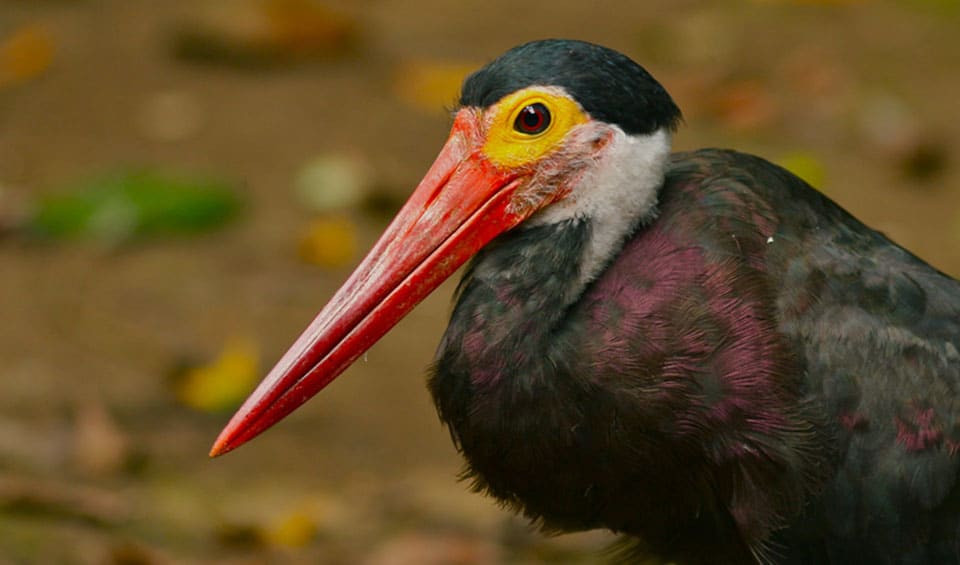Storm’s stork is a rare and elusive bird, largely unknown due to its secretive nature and the remoteness of its habitat. It is a medium-sized stork, smaller than many of its more familiar relatives, with a body length of about 91 cm (36 inches). This stork boasts a striking appearance characterized by glossy black plumage, a contrasting white belly, and vibrant orange-red facial skin with a distinctive yellow orbital ring around its eyes.
The preferred habitats of Storm’s stork are the lowland tropical forests of Southeast Asia, including Peninsular Malaysia, Sumatra, Borneo, and southern Thailand. These areas are rich in rivers and streams, which provide vital feeding grounds for the stork. Storm’s stork is well adapted to this environment, with its long legs allowing it to wade through swampy areas and its sensitive bill capable of detecting prey in murky waters.
As solitary birds, they are often seen alone, but occasionally, small groups may gather, especially during the breeding season. Their courtship displays include an elaborate aerial dance, which, like in other stork species, is a mesmerizing spectacle. These displays reinforce pair bonds and are part of the species’ complex reproductive behaviors.
The diet of Storm’s stork predominantly consists of fish, but it also preys on amphibians, small reptiles, and invertebrates. Its feeding strategy involves standing still or walking slowly to ambush prey, using its sharp bill to catch and consume its meals.
With an estimated population of only 260-330 individuals, the conservation status of Storm’s stork is alarming. The species is classified as Endangered, facing a high risk of extinction in the wild. Primary threats to its survival include deforestation and habitat fragmentation, particularly from the rampant conversion of forests to oil palm plantations and the construction of dams.
Distribution
 Brunei
Brunei Indonesia
Indonesia Malaysia
Malaysia Myanmar
Myanmar Thailand
ThailandAnything we've missed?
Help us improve this page by suggesting edits. Glory never dies!
Suggest an editGet to know me
Terrestrial / Aquatic
Altricial / Precocial
Polygamous / Monogamous
Dimorphic (size) / Monomorphic
Active: Diurnal / Nocturnal
Social behavior: Solitary / Pack / Herd
Diet: Carnivore / Herbivore / Omnivore / Piscivorous / Insectivore
Migratory: Yes / No
Domesticated: Yes / No
Dangerous: Yes / No




